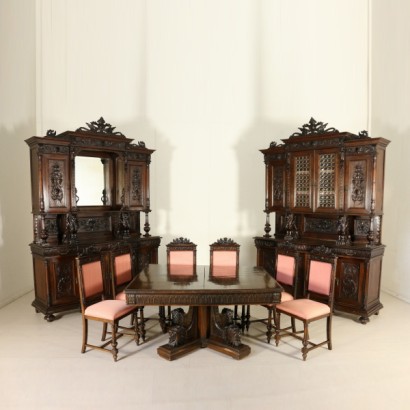Complete neo-Renaissance-style room
Features
Style: Neo-Renaissance Revival
Origin: Italy
Main essence: Walnut
Material: Solid Walnut
Description
Richly carved with grotesque masks, game and Lions in the round. Comprising sideboard with raised and leaded panes (277x190x63), sideboard with raised and mirror (277x190x63), extending (77.5 127.5 x147x max 293) and group six chairs (111x47x47).
Product Condition:
Requires the restoration and revival of polishing.
Additional Information
Style: Neo-Renaissance Revival
Stylistic revival, from the 1900s, of the forms typical of the Renaissance style.This is a style that re-proposes, looking at the grandeur of the past, decorative motifs and decorations typical of the 1500s.
Mascheroni, cornices, columns carved with herms that make up typical architectural structures of Renaissance palaces, are the elements that characterize the Neo-Renaissance style.
These elements will remain in the production of furniture until the early 1900s, contaminating themselves with floral elements.
Find out more about the Neo-Renaissance with our insights:
A Milanese library between the Belle Epoque and Fascism































